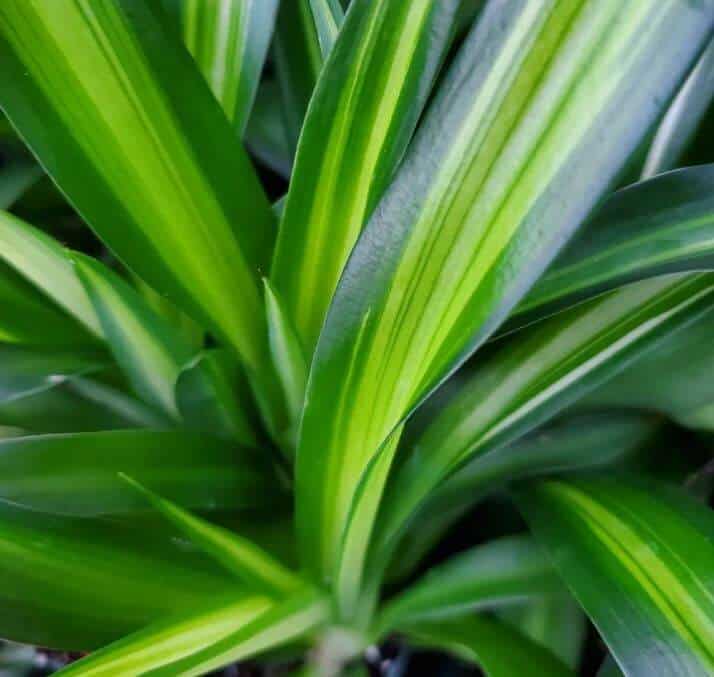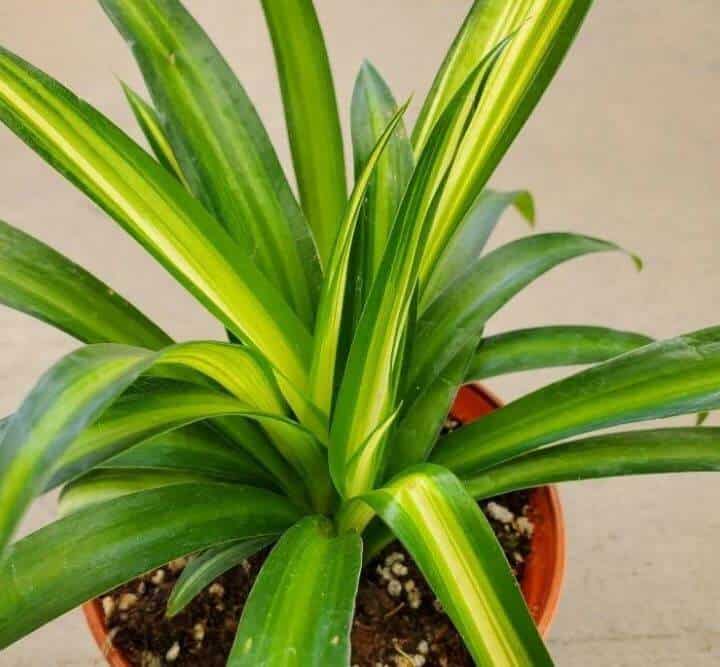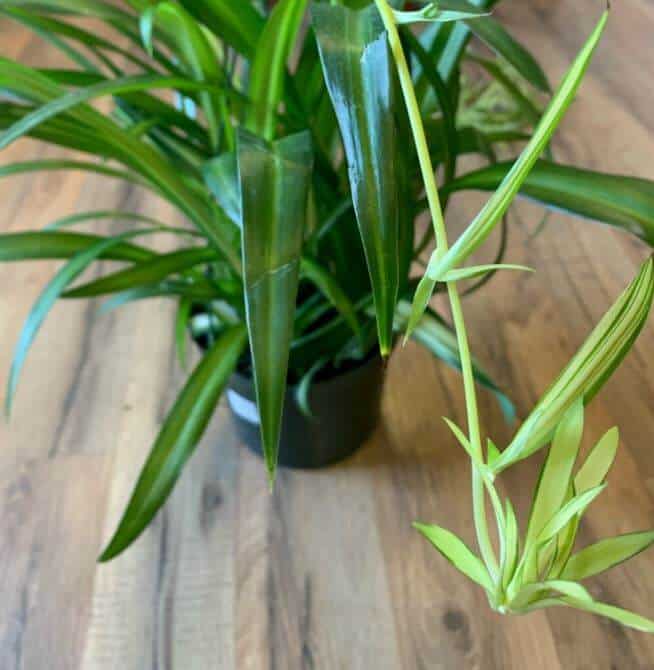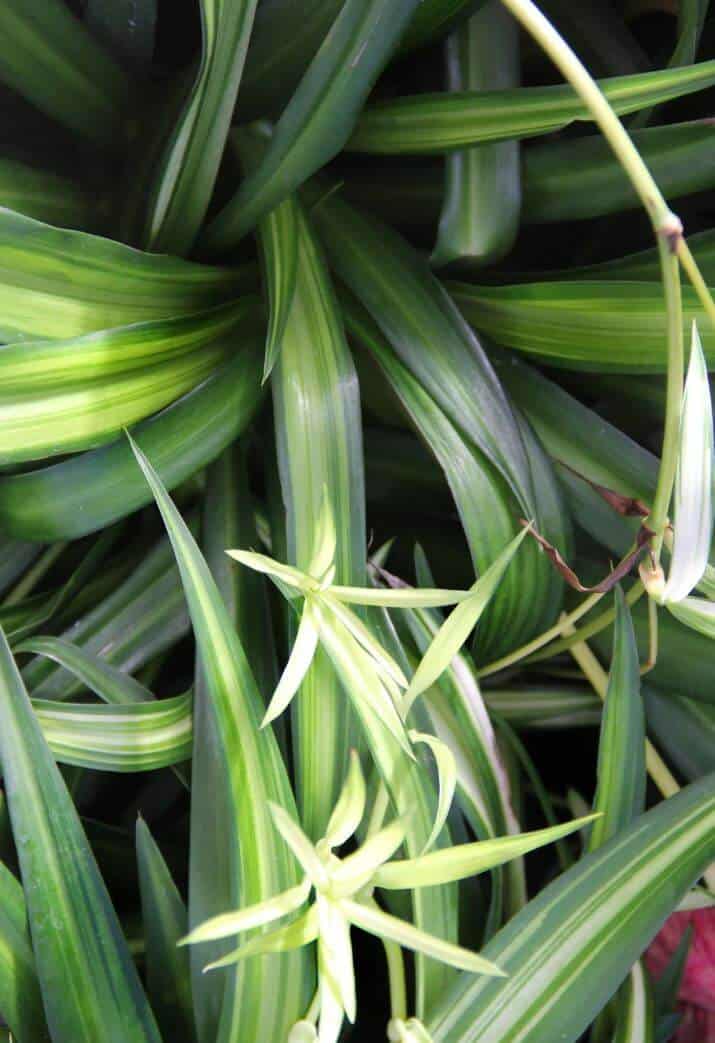Last Updated on February 8, 2023 by a Friendly Gardener
Despite the sinister name, the Hawaiian spider plant makes an exotic addition to your houseplant collection. It is a hybrid variation of the typical spider plant. The leaves of this plant start off with a variegated pattern. They graduate to dark green color as they age.
The unique plant, with its glossy green leaves and petite attractive flowers, is easy to propagate. It makes an excellent enhancement to any living space.
Since it is from a tropical climate, this plant likes its sun and the long leaves sprawl out looking like spider legs, hence the name. The plant is also called Airplane Plant or Ribbon Plant and it’s quite easy to take care of it whether you plant it indoors or outdoors.
This article will cover all the details you need to know about Hawaiian spider plant care.
Hawaiian Spider Plant Care

The Hawaiian spider plant, or as it is known in the scientific realms, Chlorophytum viridescens, is one-of-a-kind. This spider plant hybrid has broader and greener leaves than the typical plant.
It is easy to care for and grows to a manageable height of two feet. They can be planted in the garden or placed anywhere around the house.
They produce beautiful white flowers that extend up to 30 inches. However, most of the blossoms tend to fall off, and only a few remain to reproduce.
Light
The spider plant Hawaiian does not need much direct sunlight. It thrives in partial shade. While they can grow in heavy shade, they will not have sturdy growth. Hot, direct sunlight, on the other hand, will scorch the plant and can turn the tips of the leaves brown.
If growing it indoors, place the plant in the path of the early morning sun and then move it to a light shade for the rest of the day. You can keep the plant on the sill of a bright window where it will receive indirect sun.
Water
The plant has minimal water requirements. However, be careful not to underwater it. It is not drought resistant. The plant prefers lightly moist soil over soggy soil. It is also sensitive to overwatering, which can result in root rot.
Use distilled water or rainwater as the plant does not tolerate chlorine and fluoride present in tap water. Keep a consistent watering schedule. Water regularly during summer. In winter, let the soil dry out briefly before feeding it water. You should also ensure that the pot in which the plant is has enough and more drainage holes for the water to leave.
Soil

The spider plant Hawaii loves well-fertilized soil with sharp drainage. However, it can be planted in different types of soil. Its preference lies in loamy soil that has a fairly neutral soil pH. The tips of the leaves can turn brown if there is a high-level presence of salts in the soil.
Temperature
Spider plants love warm, humid conditions. They do not enjoy temperatures below 50°F, so make sure to keep them between 70°F and 80°F. Make sure to keep them away from drafty spots and air-conditioning vents.
Ideally, you can put them up in the kitchen or bathroom, where they will receive adequate humidity. Misting the plant on a regular basis will help create humid conditions and keep the plant healthy. Low humidity can cause the tips of the leaves to turn an unsightly brown shade.
Fertilizer
During the plant’s growing seasons (spring and summer), feed the plant a moderate amount of fertilizer roughly every three weeks. Ensure not to feed it excess fertilizer as it can harm the plant’s health. Under-fertilizing can also result in stunted and weak growth.
Based on your plant’s growth, use an appropriate amount of water-soluble or all-purpose granular fertilizer. Once the winter months roll by, it is best to tone down your fertilizing schedule. When the temperature goes low, the plant goes into a semi-dormant state.
Potting and Repotting

Use adequately large containers to grow your Hawaiian spider plants. Ensure that there are ample drainage holes in the growing containers. Place the plant in a loose potting mix.
The plant will need to be transplanted into a large container once the roots start protruding from the drainage holes. Typical repotting should take place once every two years at the least. Spring is the best season to repot an overgrown plant.
You will also need to repot the plant to salvage it from the ruins of root rot. If you suspect your plant has root rot, gently remove the plant from the container and inspect its roots. If the roots are problematic, repot the plant into a fresh potting mix.
Pruning
In order to keep a trimmed and clean plant, you will need to prune your Hawaiian spider plant once it becomes sparse or too leggy.
Trim the browning and dead leaves as you spot them. Get a clean pair of shears and get rid of the plantlet shoot to liven up the plant and redirect energy for healthy growth.
Pest and Plant Diseases
If you properly take care of the plant, it will stay healthy and beautiful. However, they are vulnerable to common plant pests and plant diseases.
Though generally a healthy plant, this hybrid can get infested with spider mites, aphids, and whiteflies. An effective way of getting rid of some infestations is running the plant underwater and washing away any pests that may be clinging to the foliage.
In case of more severe infestations, you will need to spray insecticide or apply natural remedies like neem oil.
Propagation

Even a novice grower can easily propagate this plant. Small plantlets grow along the plant’s stem known as babies. These are the source of a continuous supply of Hawaiian spider plants.
Once these babies or plantlets develop inch-long roots, you can carefully remove them off the stem and use them to propagate new plants. Place these plantlets with intact roots in a plastic container and a potting medium. Make sure the soil remains moist.
Conclusion
The unique Hawaiian spider plant is a fast grower that can be grown throughout the year and in any location. It is a great plant for novice plant owners as it is easy to grow and take care of.
With proper care, the plant thrives and produces lush greenery and inconspicuous flowers. Make sure to keep the plant out of direct light, provide adequate levels of water and plant food and maintain an appropriate humid environment for healthy growth.

